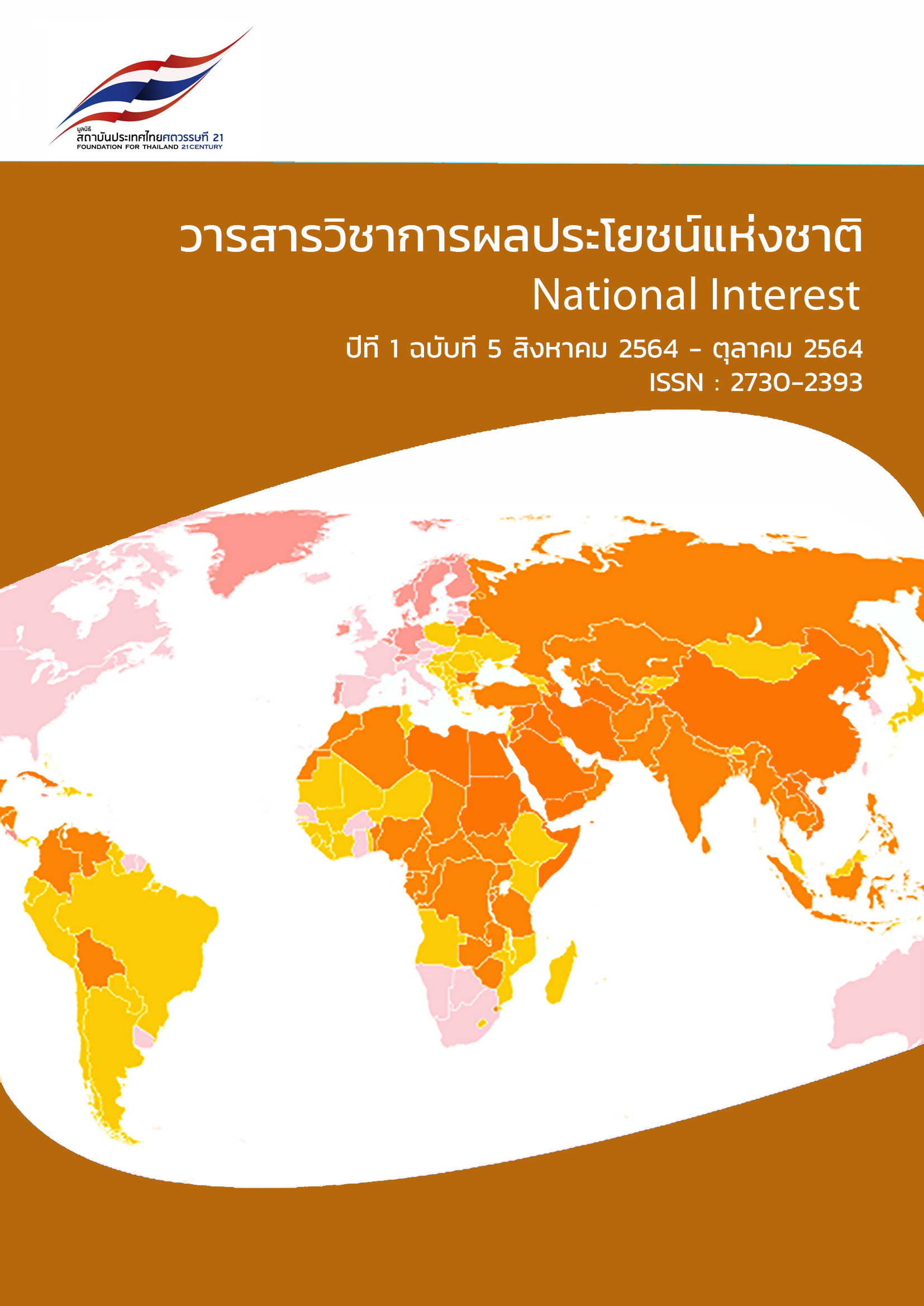Analysis structural about Core Competency in Information and Communication Technology for Academy Staff Thaksin University
Main Article Content
Abstract
This study aimed to identify information and communication technology core competencies of the academic staff of Thaksin University and develop information and communication technology core competencies of supporting staff evaluation form. In the first stage, the study was conducted to identify information and communication technology core competencies of the academic staff of Thaksin University through related documents and in-depth interviews of nine experts. Next, the data were analyzed by the Data Triangulation method, and results were used to form a structure of information and communication technology core competencies. Then, a focus group discussion with six experts was conducted to revise drafted core competencies for information and communication technology academic staff and weigh the selected ones. After that questionnaires on core competencies structure were given to the sample subject of 211 officials and academic staff, using the simple random sampling technique, to insist the core competencies in information and communication technology.
The study revealed the following findings.
- The structure of core competencies in information and communication technology of the supporting staff of Thaksin University consisted of knowledge, skills, and attitude.
- The percentage of weight proportion of core competencies in information and communication technology of the supporting staff of Thaksin University in descending were skills - sixty percent, knowledge - thirty percent, and attitude – ten percent.
- The structure of core competencies in information and communication technology was reliable because the construct validity and convergent validity were at the good level and its coefficient of forecasting (R2) of between 0.49 and 0.88 showed that the majority member of each component were reliable.
Article Details

This work is licensed under a Creative Commons Attribution-NonCommercial-NoDerivatives 4.0 International License.
National Interest Academic Journal under Creative Commons Attribution-NonCommercial-NoDerivatives 4.0 International License The journal allows access or distribution of academic work without charge or registration. To support the exchange of knowledge Scope covers academic work in geopolitics. Geoeconomics and Innovation
Users can share, copy and distribute all information published in National Interest Academic Journal in any form or medium subject to the following conditions:
Citation — Permission to use, reproduce, distribute, or modify the work. But credit must be given to the owner of the work. If the work is used without credit, the name of the owner of the work will be Must obtain permission from the owner of the work first.
Noncommercial — The work may be used, reproduced, distributed, or modified. However, the work or article may not be used for commercial purposes.
Cannot be modified — The work may be used, reproduced, and distributed. But do not modify the work. unless permission is received from the owner of the work first
References
Information and Communication Technology Executive Committee, Strategic Plan on Information and Communication Technology Thaksin University 2015.Songkhla: Computer Bureau Thaksin University, 2015,pp. 1-20
Ministry of Digital Economy and Society, “Leadership Seminar Documents and senior government information technology executives on Driving Digital Development Plans for the Economy and Society of Government Agencies,” in Digital Thailand 2016, Bangkok:2016,pp. 50-52.
Ministry of Information and Communication Technology, Digital Economy and Society Development Plan, Bangkok: Ministry of Information and Communication Technology, 2016,pp. 4-5.
J. F. Hair et al., Multivariate data analysis (5th ed.). Englewood Cliffs, New Jersey: Prentice Hall, 1998, pp. 107
C. Woodruffe, What is meant by competency?. New York: McGraw-Hill, 1992, pp. 29-36
Anntoinette D. Lucia and Richard Lepsinger, The Art and Science of Competency Model: Pinpointing Critical Factors in Organizations. San Francisco: Jossey-Bass Pfeiffer, 1999,pp. 2-5
Kanya Rasamethammachot, “An Indisputable Management Tool,” Productivity World, vol. 9, pp. 44-51, 2004.
A.Isman and O.C. Gungoren, "Digital citizenship," TOJET: The Turkish Online Journal of Educational Technology, vol. 13, no. 1, pp. 73-77, 2014.
Seree Chadcham, “Confirmation Component Analysis,” Journal of Educational Measurement, vol. 1, vol. 12, pp. 15-42, 2004.
Chaiyan Sakulsriprasert, “Confirmation Component Analysis,” Journal of Clinical Psychology, vol. 44(11), pp. 1-13, 2013
Jiraprapa Akkaravorn, “What Is Competency?” Graduate Program for Human Resource Development, National Institute of Development Administration, 2009. [online]. Available: http://www.nitiphong.com/paper_pdf/whatisCompetency.pdf. . [Accessed August 7, 2017].
Wittaya Damrongkiattisak, “Digital Citizenship),” 2015. [online]. Available: http://www.infocommmju.com/icarticle/images/stories/icarticles/ajwittaya/digital/Digital_Citizenship.pdf. [Accessed August 24, 2019].
Teck Soon Hew and Lai Ying Leong, "An Empirical Analysis of Malaysian Pre-university Students' ICT Competency Gender Differences," International Journal of Network and Mobile Technologies, vol. 1, no. 2, pp.15, 29,2011
Saifon Paopanao, “Education of Competency in Using Information and Communication Technology for Learning of Undergraduate Students Rajamangala University of Technology Rattanakosin Wang Klai Kangwon Campus,” Veridian E-Journal, vol. 1, no. 15, pp. 541-561, 2012.
Nongluck Wirachchai, Structural Relationships.Bangkok: Chulalongkorn University Printing House, 1994
Derek Hornby and Thomas Reymond, "Toward a Better Standard of management," Personal Management, vol. 21, pp. 52-55, 1989.


